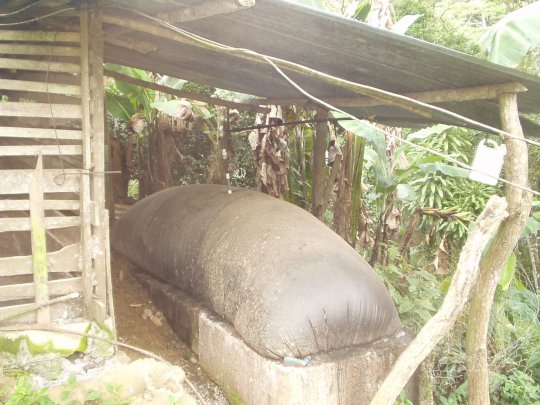#biogas
Text










Ben 10 Time
#ben 10 redesign#Ben 10#fanart#comicart#sketch#digitalart#art#heat last#four arms#stink fly#xlr8#ben 10 xlr8#grey matter#cannon bolt#upgrade#wildmutt#biogas#generator Rex#character art#character redesign
79 notes
·
View notes
Text
I have an idea for a small hamlet deep in hills and woods.
The central gathering point is a common area with an outdoor stage and benches like a campground and a longhouse that is a multipurpose structure. A section partitioned for equipment storage for well drilling, dirt road maintenance, scaffolding, timber sawmill, etc. A workshop of various disciplines to build whatever is needed and teach new skills. And finally a kitchen for community events.

Surrounding this common agora would be driveways to individual homesteads. The architectural designs focusing on using the renewable resources of the forest. Log cabins, timber frame, and A-frame homes of various sizes plus whatever barns, chicken coops, sheds, and greenhouses are required for each home. These all use related wood working techniques so each member's accumulated experience can help in the next project.

The idea is for the whole community to be gridless with individual power setups based on the terrain around the homes, meaning solar, hydro, biogas digester, etc. The longhouse gets two power systems, one either hydro or solar, with a woodgas generator backup. The land immediately surrounding each home should be gardens and livestock shifting into native forests. Silviculture would be a community effort with constant renewal of the forest and supporting wildlife.
While not 100% self sufficient (nothing really is) this supportive community with homegrown food surrounded by a healthy forest could easily go extended periods of time without needing to leave, while operating on a very low cost of living.
#self sufficiency#self reliance#prepper#off grid#fjarlsland#cabins#a frame#timberframe#wood gas#biogas
101 notes
·
View notes
Text
Taking Care of Business 3 – Methane Digesters
In my previous issues of Taking Care of Business I discussed how human feces can be composted aerobically in dry composting toilets, and also how flush-toilets can be made sustainable. Today I want to look at another alternative, the Methane Digester.
Methane? The greenhouse gas exacerbating climate change?
That's right. Letting organic matter decompose without the aid of oxygen produces methane, a flammable gas known for its distinct smell. We don't have to go too far to experience it, as this anaerobic decomposition may happen right in our bodies, where our intestines form an air-tight container to the decomposing organic matter. These farts that occasionally build up and escape in smelly clouds accompanied by the sound of the leather saxophone, are so benign that they're hardly worth the mention... in our species. (If it happens on a regular basis, there may be some digestion-related problem on hand. Otherwise you may laugh it off, or light it on fire for more laughs.)
In case of cattle, however, the emitted methane is more significant, due to their digestive mechanism, as well as larger sizes. Still, all the cows in the world are relatively low methane producers compared to the fossil fuel industry, especially with such innovative methods as fracking. And then there is the methane escaping from thawing permafrost, leaving huge craters behind. Since methane is a greenhouse gas, just like carbon-dioxide, this recently released result of ancient fermentation is both a cause and an effect of climate change.

image source
So How Can You Use This Gas?
By burning it, of course, just like propane, butane, or any other burnable gas. The idea is, if we are going to cook on a gas stove, it may as well be something that doesn't need to be mined from finite resources. Fermenting organic material in an oxygen-free space is not that hard, especially since our bodies already produce sufficient amounts of the needed raw material. It just needs to be fermented a bit further.
The Things I've Seen...
I have come across two impressive cases of methane digesters I'd like to present here. One is noteworthy for its simplicity, the other for its efficiency. Although both rely on animal rather than human excrement, the variability between these two examples suggests a lot of leeway for experimentation. The designer of one of these systems even said he could imagine it feasible to produce cooking gas for a high-rise apartment building, by fermenting the human wastes of its residents. Sounds exciting, though I still need to see such a system in action... But let me start introducing the simple digester:
The Best Thought-out Pig Sty
This setup was designed by a farmer, rancher, gardener, and tinkerer in Costa Rica. Even though he'd never even heard the term Permaculture, his design closes many loops beautifully. It's an ingenious way to combine corn, pigs, methane, and the kitchen stove.
I was quite amazed to see how clean the pig sty was. Of course, the guy pointed out, it gets cleaned three times a day, every time the pigs are fed. I first thought that was ridiculous, but he explained the reasons for this unusual practice. First of all, the pigs appreciate a clean floor (good for them). Also, it only takes about five minutes to hose down the slanted floor, and sweep all excrement with the uneaten corn-meal into the gutter on the lower end of the sty, so work wouldn't accumulate. Most importantly, though, he didn't want the pig excement to start fermenting in the open air.

All the slush washed into the gutter passed into a concrete basin, covered airtight by a black tarp. There it would sit, and be slowly decomposed by anaerobic bacteria, who as a byproduct generated methane. This gas stayed trapped under the black tarp, only a safety valve on top allowed excess pressure to escape. From there a pipe ran straight into the kitchen, where it was hooked up to a pair of burners. Using it was as simple as any gas stove.
The water that carried the material from the pigsty flowed through the digester, and came out as a brown colored, nutrient-rich effluent. This was further diluted with water and used to irrigate the corn, which eventually became pig-food. The circle was closed, the corn grew like crazy, the pigs enjoyed a clean sty and literally more food than they could eat, and nobody had to pay for the kitchen gas. Simple, easy, and at perfect scale. The family of six did most of their cooking that way, except for certain delicacies that required wood fire.
Efficiency in a Less Suitable Climate
Costa Rica, where temperatures are fairly stable all year round, even in the mountains, is the perfect place for this sort of setup. The digesting bacteria don't like sudden changes in temperature, which would affect their population, and thus their efficiency at fermenting. The other digester, however, was in the high desert of New Mexico, where outside temperatures would normally fluctuate between freezing at night and sweltering in the daytime. So how did its designer make it work? By thoroughly insulating it at night, and opening up the insulation to absorb the daytime heat. Also, he was living in an earthship-inspired home, which added to the temperature regulation.
The other thing about this amazing setup was that he hardly had any animals to produce fermentable material for him. About 10-15 chickens and a dog was all there was. A daily trip to the chicken coop provided a scooped dust-pan full of chicken manure, with ample feathers, straw, chaffs, and such bedding material. The latter part was important not only for its carbon-rich nature, but for the added surface area, which bacteria would populate. All this was washed down a modified garbage disposer, turning everything into a homogeneous slurry, and added into the digester. Unlike the owner of its Costa Rican counterpart, he didn't want to waste even a bit of excess gas. So with help of a compressor, powered by a wind turbine, the gas was concentrated into a big round container, previously used for storing propane. And of course, the effluent from this digester was also used to fertilize plants. Thus, he covered all the cooking needs of his 1-2 head household. Impressive for his location, and with only a dozen chickens!
sources: 1, 2, 3, 4,
26 notes
·
View notes
Text
#business#branding#industrial pumps#pumps#oil & gas industry#food industry#mining equipment#chemical industry#biogas#beverage industry
2 notes
·
View notes
Video
youtube
HomeBiogas Bio-Toilet: the eco-friendly solution for the modern home!
My husband and I feel the urgent need to go off-grid and raise our own food and support local food banks.
We will go solar since electricity is costly to hook up, but USDA says there is grant money for that. We shall see.
I know all of you are sick to death of the narratives being shoved down our throats worldwide!
The energy crisis is a scary thing. The WEF is pushing electric everything without a viable solution to aging grids. What’s wrong with Nuke?
Look, we all want what’s best for our environment, but you can’t jump into the deep end of an empty pool.
My team, kitty, O anon, and others have been trying to shine a light for over four years! We are scared!
When we tell you to stock up, we mean at least 3 months of food. Make sure you have propane, grills, flat tops, and solar generators.
Plant a garden no matter how small and trade with neighbors.
We don’t care about your color, race, creed, or sexual orientation. We believe in Humans no matter their political views.
God and Jesus Christ are on our side.
Exodus 20:3-5King James Version
3 Thou shalt have no other gods before me.
4 Thou shalt not make unto thee any graven image, or any likeness of any thing that is in heaven above, or that is in the earth beneath, or that is in the water under the earth.
5 Thou shalt not bow down thyself to them, nor serve them: for I the Lord thy God am a jealous God, visiting the iniquity of the fathers upon the children unto the third and fourth generation of them that hate me;
5 notes
·
View notes
Text
#fürgüllesindwirzuständig#meixnergülletechnikihrseparatordienstleister#gülletechnik#bsaistblau#atackemitderkacke#fanseparator#bsapumptankwagen#fendfahrerarmy#gülleballern#güllebomber#jedesfasseinbomech#lohner#lohnerausleidenschaft#lohnunternehmerausleidenschaft#streisal#vogelsang#bomech#biogasfachverband#biogas#blauistschöner#bsagmbh#separators#Separator#schlauchpumpe#fürjedesfasseinbomech
2 notes
·
View notes
Text
Bei hohem Druck und großer Hitze verwandelt sich Biomasse (z.B. Klärschlamm) in Bio-Rohöl, aus dem sich nachhaltige Kraftstoffe wie Diesel und Kerosin herstellen lassen. Im Labor funktioniert die hydrothermale Verflüssigung schon länger. Nun sollen Pilotprojekte zeigen, wo sie sich rechnet.
2 notes
·
View notes
Text
Why biogas in Kerala is considered as an excellent fuel?
Biogas in Kerala is not just a trend; it’s a sustainable energy revolution that is transforming the way we think about fuel and waste management. Nestled in the southwestern corner of India, Kerala, known for its stunning backwaters, vibrant culture, and rich biodiversity, has been making significant strides in adopting biogas technology as a means to address both environmental and energy challenges.
At its core, biogas is a renewable energy source produced through the anaerobic digestion of organic matter such as agricultural waste, kitchen scraps, and animal manure. This process generates a combustible gas primarily composed of methane and carbon dioxide, which can be utilized for cooking, lighting, and even electricity generation. What makes biogas particularly appealing in Kerala is its abundance of organic waste, which provides a readily available feedstock for biogas production.
The adoption of biogas technology in Kerala is driven by several factors, including the state’s strong agricultural sector, dense population, and growing environmental consciousness. Farmers across Kerala have embraced biogas as a means to manage agricultural residues and animal waste effectively while simultaneously reducing their reliance on traditional fossil fuels. By installing biogas plants on their farms, they can convert organic waste into a valuable energy resource, thereby improving their energy self-sufficiency and reducing operational costs.
Moreover, biogas technology offers a sustainable solution to the pressing issue of waste management in Kerala. With its high population density and limited land availability, the state faces significant challenges in disposing of organic waste generated from households, markets, and industries. By diverting organic waste streams into biogas digesters, Kerala can not only mitigate the environmental impacts associated with landfilling and open burning but also harness the potential energy locked within these waste streams.
The benefits of biogas in Kerala extend beyond environmental stewardship to include social and economic advantages as well. In rural areas, where access to clean cooking fuel is limited, biogas provides a reliable and affordable alternative to traditional biomass fuels such as firewood and charcoal. This not only improves indoor air quality and reduces health risks associated with indoor smoke but also empowers rural households, particularly women, by relieving them of the arduous task of collecting firewood.
Furthermore, the decentralized nature of biogas production creates opportunities for rural entrepreneurship and job creation. Local biogas technicians and entrepreneurs play a crucial role in promoting, installing, and maintaining biogas systems, thereby stimulating economic growth and fostering community development.
In recent years, the government of Kerala has taken proactive measures to promote the widespread adoption of biogas technology across the state. Incentive programs, subsidies, and technical assistance schemes have been implemented to support farmers, households, and industries interested in setting up even portable biogas in Kerala. Additionally, awareness campaigns and capacity-building initiatives have been launched to educate the public about the benefits of biogas and the importance of sustainable waste management practices.
As Kerala continues its journey towards a cleaner and more sustainable future, biogas remains a beacon of hope — a renewable energy solution that not only addresses energy needs but also contributes to environmental preservation, social equity, and economic prosperity. With its abundant organic resources and innovative spirit, Kerala is poised to lead the way in biogas adoption, setting an inspiring example for regions around the world seeking to embrace renewable energy and build resilient communities.
0 notes
Text
Unveiling Biogas in Kerala: A Green Energy Revolution

Kerala’s abundance of agricultural leftovers and organic waste makes it a perfect breeding ground for biogas production. Through the natural breakdown of this waste, biogas emerges as a clean and renewable energy source.
The allure of biogas lies in its simplicity and effectiveness. It not only provides energy but also addresses waste management issues, reducing Kerala’s environmental footprint.
Moreover, biogas plants in Kerala are not just about energy production; they’re about community empowerment. By promoting decentralized biogas units, Kerala is empowering local communities and farmers, creating opportunities for self-sufficiency and additional income.
In addition, the government’s support through subsidies and technical assistance is driving the widespread adoption of biogas in Kerala.
From small-scale household setups to larger community plants, biogas is becoming synonymous with sustainable living in Kerala.
#biogas in kerala#biogas#biogas in thrissur#biogas plant in kerala#incinerator manufacturers in kerala#biogas plant for home
0 notes
Text

Post: Wase zaps microbes to squeeze more biogas from wastewater sludge | TechCrunch https://www.blaqsbi.com/5NAQ
0 notes
Text

TrickleBio is transforming the way we view waste by harnessing its potential to generate clean energy. Discover how TrickleBio's groundbreaking technology converts various forms of waste into valuable energy resources, reducing environmental impact and promoting a circular economy. From organic matter to agricultural residues, TrickleBio's cutting-edge processes efficiently extract energy while minimizing waste disposal. Explore how this eco-conscious approach not only addresses energy needs but also contributes to a greener, more sustainable future.
0 notes
Text

Discover the latest innovations in CBG bio-CNG production plants, revolutionizing renewable energy. Explore cutting-edge technologies enhancing efficiency and sustainability, driving the transition to greener fuel solutions. Learn about advancements in CBG production processes, from biomass feedstock to purification methods, optimizing resource utilization and reducing environmental impact.
Uncover insights into the scalability and economic viability of bio-CNG plants, shaping the future of renewable energy infrastructure. Stay informed about emerging trends and developments in the CBG industry, and their potential implications for energy markets and sustainability initiatives. Join the journey towards a more sustainable future with CBG bio-CNG production plants, where innovation meets environmental responsibility.
0 notes
Text
Combined Heat and Power Systems
In the pursuit of sustainable energy solutions, combined heat and power (CHP) systems have emerged as a versatile and efficient option for meeting the energy needs of various industries and communities. Also known as cogeneration, CHP offers a compelling approach by simultaneously producing electricity and useful heat from a single fuel source. This integrated process not only enhances energy efficiency but also reduces emissions and lowers operational costs, making it an attractive choice for both large-scale facilities and smaller-scale applications.
Understanding Combined Heat and Power:
At its core, combined heat and power systems utilize a prime mover, such as a gas turbine, steam turbine, or reciprocating engine, to generate electricity. However, unlike conventional power generation methods that dissipate excess heat as wasted energy, CHP systems capture this thermal energy and repurpose it for heating, cooling, or other industrial processes. This dual-purpose operation significantly increases the overall efficiency of the system, often surpassing 80% in total energy utilization, compared to the 30-40% efficiency typical of conventional power plants.
Key Components and Operation:
A typical CHP system comprises several key components, including the prime mover, generator, heat recovery unit, and distribution infrastructure. The prime mover converts the fuel—natural gas, biomass, or waste heat—into mechanical energy, which drives the generator to produce electricity. Simultaneously, the heat recovery unit captures and utilizes the excess thermal energy, either through heat exchangers, steam turbines, or absorption chillers, depending on the specific application.
The captured heat can serve various purposes, such as space heating, water heating, or powering industrial processes. This versatility makes CHP systems suitable for a wide range of industries, including manufacturing plants, hospitals, universities, and district heating networks. Additionally, the distributed nature of CHP enables localized energy production, reducing transmission losses and enhancing grid resilience.
Advantages of Combined Heat and Power:
Enhanced Efficiency: By harnessing both electricity and useful heat from a single fuel source, CHP systems offer significantly higher energy efficiency compared to conventional power generation methods.
Cost Savings: The utilization of waste heat for heating or cooling purposes reduces the need for separate heating systems, leading to lower energy bills and operational costs over time.
Emissions Reduction: CHP systems produce fewer greenhouse gas emissions per unit of energy generated compared to traditional power plants, contributing to environmental sustainability and regulatory compliance.
Grid Resilience: Distributed generation provided by CHP systems enhances the resilience of the energy grid by reducing dependence on centralized power plants and minimizing transmission losses.
Energy Security: With the ability to operate independently of the grid during outages, CHP systems provide a reliable source of energy, ensuring uninterrupted power supply for critical facilities and services.
Future Outlook and Challenges:
Despite its numerous benefits, widespread adoption of combined heat and power faces several challenges, including high initial costs, regulatory barriers, and technical complexities. Additionally, the integration of renewable energy sources, such as solar and wind, into CHP systems presents both opportunities and challenges for optimizing performance and flexibility.
However, advancements in technology, favorable government policies, and growing awareness of the need for sustainable energy solutions are driving the expansion of CHP deployment worldwide. As industries and communities seek to minimize their environmental footprint and maximize energy efficiency, combined heat and power systems are poised to play an increasingly vital role in the transition to a low-carbon future.
In conclusion, combined heat and power systems offer a compelling solution for meeting the growing demand for energy while reducing environmental impact and enhancing economic competitiveness. By leveraging the synergies between electricity generation and thermal energy recovery, CHP systems represent a sustainable pathway towards a more efficient and resilient energy infrastructure.
0 notes
Text
#cng#biocng#compressednaturalgas#bus#cars#biogas#liebermitcng#lpg#naturalgas#biomethan#erdgas#autogas#m#autobus#k#lovato#strohimtank#spottingcng#t#avtoqaz#klimaschutz#auto#transport#drivewithcng#digitronic#cngstattdiesel#ecofriendly#cngcar#prozentregenerativ#alternativeantriebe
0 notes
Text
Biogas Plants in India | Biogas Plant | Khetivyapar
Explore the green revolution in India with the rise of biogas plants. Learn about the innovative technology and sustainable practices driving the adoption of biogas as a prominent renewable energy source. Our comprehensive guide to "Biogas Plants in India" unveils the transformative impact of harnessing energy from organic waste.
In the heart of India's energy landscape, biogas plants are emerging as a beacon of sustainability. Discover the intricate process through which these plants convert organic materials into a clean and renewable energy source. From agricultural residues to kitchen waste, biogas plants are revolutionizing waste management while providing a reliable source of power.

Delve into the economic and environmental advantages of biogas production. Witness how these plants contribute to reducing greenhouse gas emissions, promoting sustainable agriculture, and fostering rural development. Biogas is not just a fuel; it's a catalyst for positive change, creating a circular economy that benefits both the environment and local communities.
Learn about the scalability of biogas technology, from small-scale rural setups to large industrial systems. Governments and businesses across India are recognizing the potential of biogas in meeting energy demands sustainably. Join the movement towards a cleaner, greener future as we navigate the success stories and challenges faced by biogas projects in India.
This guide is your gateway to understanding the social, economic, and environmental dimensions of biogas plants in India. From decentralized energy solutions to enhancing agricultural productivity, biogas is at the forefront of India's commitment to a sustainable energy transition.
Embark on a journey into the world of "Biogas Plants in India" and witness how these eco-friendly powerhouses are shaping a resilient and sustainable energy future for the nation. Embrace the power of biogas and contribute to India's path towards a cleaner and more energy-efficient tomorrow.
0 notes
Text

Join us at the upcoming 14th International Conference on #Biofuels and #Bioenergy
🗓️ Oct. 31-Nov. 01, 2022
📍 #Rome, #Italy
Kindly register now: https://cutt.ly/8JprjhH
#biodiesel#bioenergy news#bioenergoterapia częstochowa#bioenergy feedback#bioenergy#biomass#biofuels#biogas#renewable energy#renewable power generation#walden renewables#renewable sector#renewable technology#emissions#supply#carbon#environmental#operations
2 notes
·
View notes